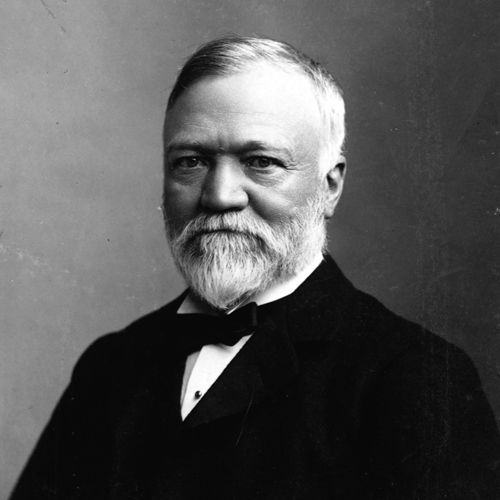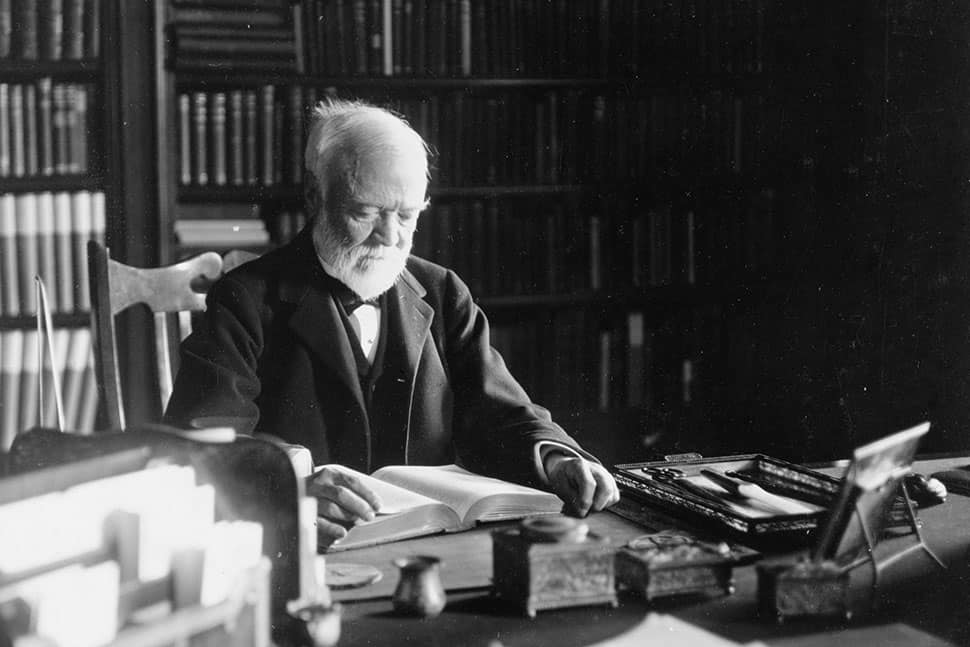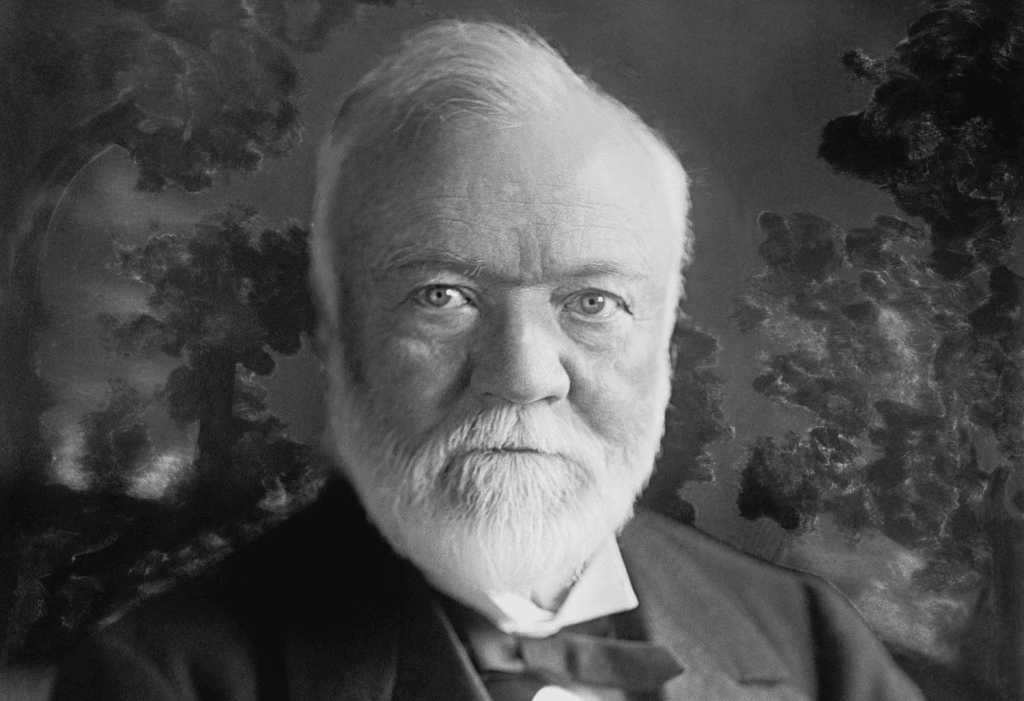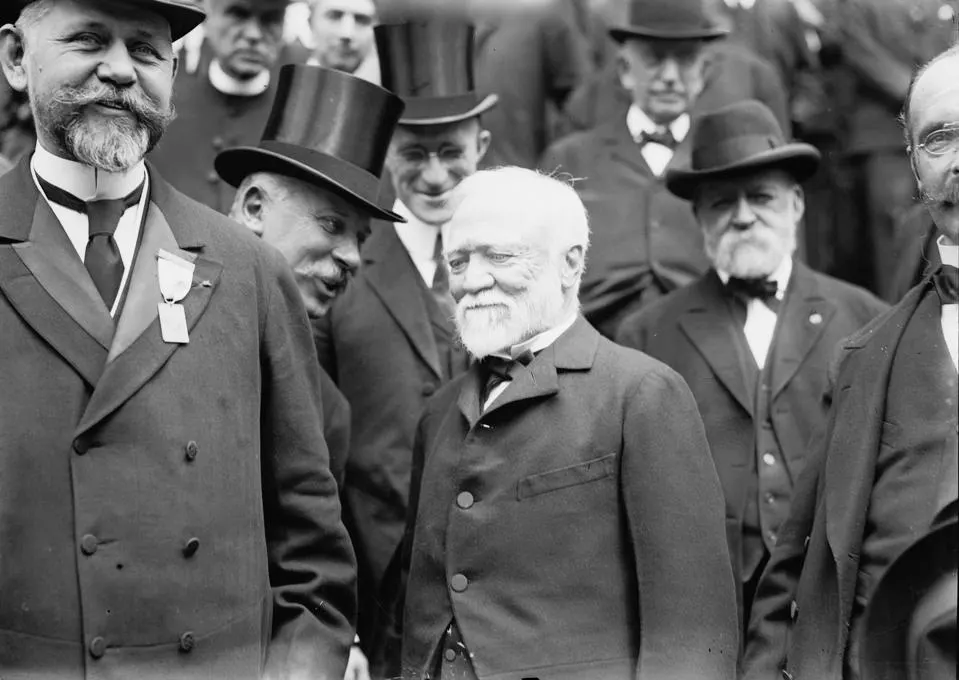There are few names in American history that capture the spirit of the American Dream quite like Andrew Carnegie. Born in poverty and raised in a one-room home in Scotland, Carnegie arrived in the United States as a poor immigrant. He started with nothing literally pennies and climbed to become one of the richest men in the world. But what makes his story even more remarkable is how he chose to spend his wealth: not on luxury, but on legacy.

Humble Beginnings in a New World
Andrew Carnegie was born in 1835 in Dunfermline, Scotland. When his family immigrated to America in 1848, they settled in Allegheny, Pennsylvania. Carnegie was just 13 years old when he took his first job as a bobbin boy in a cotton factory. He worked 12-hour shifts, six days a week, for $1.20 per week. But even then, he had dreams far bigger than the factory floor.
He was fiercely curious and self-taught, borrowing books wherever he could. That hunger for knowledge would later shape not just his own life, but the lives of millions.

Climbing the Ladder One Step at a Time
From messenger boy to telegraph operator to railroad assistant, Carnegie worked his way up with determination and intelligence. By the time he was in his 30s, he had invested wisely in railroads, ironworks, and eventually steel. He understood the tides of American industry and positioned himself right where the growth would be.
Video:
Andrew Carnegie Documentary: One Of The Wealthiest Person Of All The Time.
In 1892, Carnegie Steel Company was formed. Under his leadership, it became the largest and most profitable industrial enterprise in the world. His focus on efficiency, vertical integration, and innovation revolutionized steel production in America.
Then, in 1901, at the height of his success, Carnegie sold his steel empire to J.P. Morgan for a staggering $480 million a figure that would translate to billions today. It was the largest industrial sale in U.S. history at the time.

A Turning Point: Wealth with Purpose
After the sale, Carnegie didn’t retreat to a life of comfort. Instead, he pivoted entirely to philanthropy. He believed, as he famously wrote in The Gospel of Wealth, that “the man who dies rich, dies disgraced.” For Carnegie, wealth was not something to hoard, but something to give away for the greater good.
And give he did nearly 90% of his fortune.

Libraries, Learning, and Legacy
Carnegie had always seen knowledge as a path to opportunity. So he made it his mission to bring books and education to the masses. He funded the creation of over 2,500 public libraries across the United States, Canada, and beyond. In towns large and small, “Carnegie Libraries” became gateways to self-improvement and community growth.
He also founded and endowed numerous institutions, including:
- Carnegie Mellon University in Pittsburgh
- The Carnegie Foundation for the Advancement of Teaching
- The Carnegie Institution for Science
- The Carnegie Endowment for International Peace
These were not just buildings, but centers of innovation, research, and societal change.
Video:
Andrew Carnegie’s 5 Principles of Success
Philanthropy That Shaped a Nation
What set Carnegie apart wasn’t just the amount he gave it was how and why he gave. He didn’t believe in handouts. He believed in providing tools access to education, libraries, and institutions so people could help themselves. His philanthropy was strategic, thoughtful, and deeply rooted in the idea of empowerment.
His influence didn’t stop with money. He inspired generations of wealthy Americans, from John D. Rockefeller to Bill Gates, to think about their legacy not in terms of assets, but impact.

A Life Larger Than Wealth
Andrew Carnegie passed away in 1919, but his legacy lives on in quiet reading rooms, bustling college campuses, and groundbreaking scientific institutions. He didn’t just build a business he built a blueprint for what it means to give back.
His story proves that you don’t need to be born rich to make a difference. You just need vision, work ethic, and a heart big enough to think beyond yourself.
Carnegie’s journey from bobbin boy to steel titan to global philanthropist isn’t just a historical tale. It’s a reminder that true success is not measured by what you take, but by what you give.


